In this guide, we’ll explore an array of beautiful flowers that are ideally suited for planting in June. Each section will dive into the unique characteristics of these flowering plants, their care requirements, and tips for making them flourish.
Gaillardia
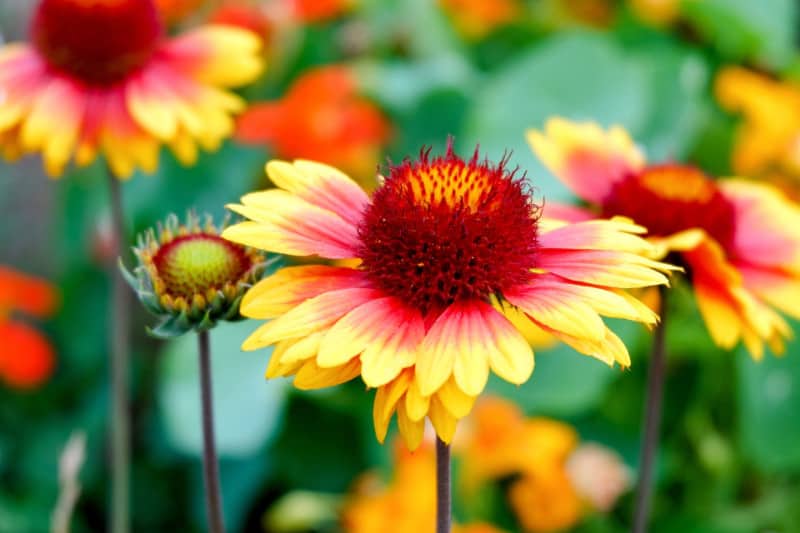
Also known as the blanket flower, Gaillardia is a vibrant perennial that thrives in sunny gardens. Characterized by its stunning red and yellow petals, Gaillardia blooms from late spring through early fall, offering a long season of color. This hardy plant prefers well-draining soil and can tolerate drought, making it an excellent choice for low-maintenance gardening.
To plant Gaillardia in June, space them about 12 to 18 inches apart to allow for adequate air circulation. They attract bees and butterflies, enriching your garden’s biodiversity. Regular deadheading will promote continuous blooming and keep the plants tidy. If you want a pop of color that can withstand the summer heat yet require minimal watering, Gaillardia is an ideal pick.
Butterfly Milkweed

Butterfly Milkweed, or Asclepias tuberosa, is indispensable for pollinator-friendly gardens. From June through September, this perennial produces clusters of bright orange-yellow flowers that are not only visually stunning but also serve as a nectar source for butterflies, especially the monarch. It prefers well-drained soil and full sunlight, making it suitable for a variety of garden settings.
When planting Butterfly Milkweed in June, ensure that there is enough space for the plant to spread, as it can grow up to two feet tall. This flower is drought-resistant once established, so be mindful not to overwater. Its deep taproot allows it to survive dry spells, making it an outstanding choice for xeriscaping. Planting Butterfly Milkweed is a step towards creating a vibrant ecosystem while indulging in the beauty it brings to your garden.
Pentas
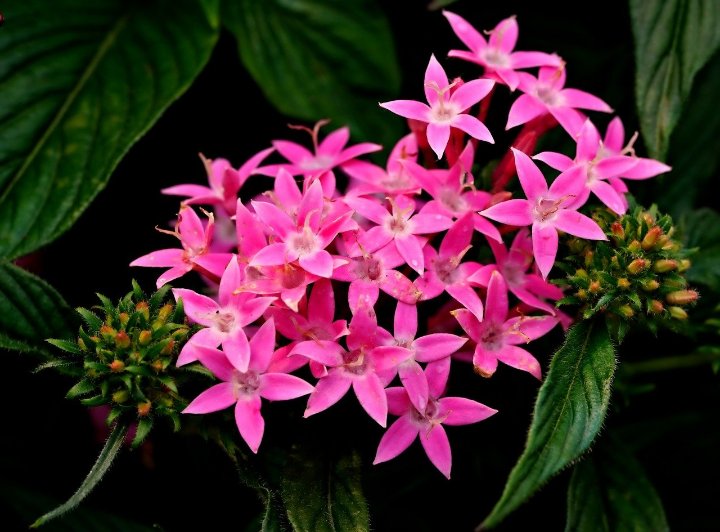
Pentas, also known as starflowers, are beloved for their clusters of star-shaped blooms, which come in shades of pink, red, and white. These annual flowers bloom profusely from late spring to frost, attracting butterflies and hummingbirds. Pentas thrive in full sun and well-drained soil, making them perfect for garden beds and containers alike.
When planting Pentas in June, opt for a location that receives full sunlight for at least six hours a day. They benefit from regular deadheading, which encourages more blooms and helps maintain a bushy appearance. With their vibrant colors and wildlife-attracting properties, Pentas are an excellent choice for creating lively flower beds or patio containers.
Daylily
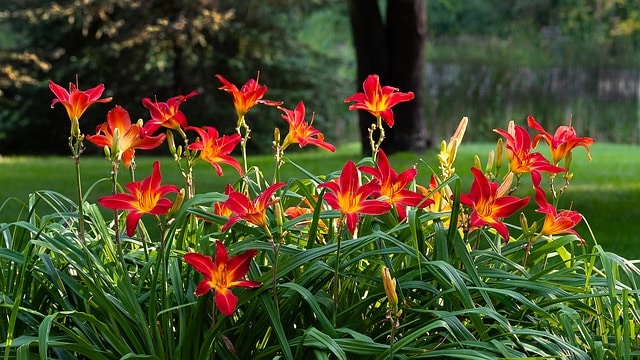
Daylilies (Hemerocallis) are perennials known for their hardiness and stunning variety. Each flower only lasts a day, but the plant produces an abundance of blooms throughout the summer, spanning a wide array of colors. Daylilies are adaptable and can thrive in various soil types, though they do prefer a mix that drains well.
Plant Daylilies in June, and consider grouping different varieties together for a layered look. They’re exceptionally low-maintenance and require minimal care once established. These flowers can tolerate drought but appreciate regular moisture, particularly during blooming season. Incorporating Daylilies not only adds beauty to your garden but also brings resilience, as they are known to deter deer and other garden pests.
Begonia
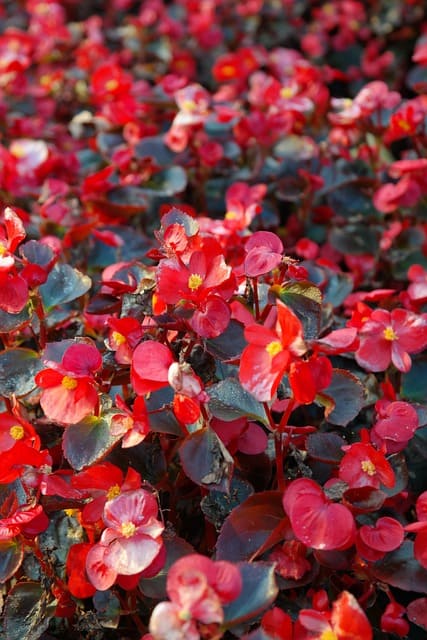
Begonias are fantastic when it comes to adding a touch of elegance to shaded areas of your garden. Available in various forms, including tuberous and fibrous types, Begonias bloom in vivid colors, making them a favorite among gardeners looking for a splash of color. They thrive in moist, well-drained soil and prefer indirect sunlight, which is characteristic of many shaded gardens.
When planting Begonias in June, ensure they are spaced properly to allow for air circulation, helping to prevent fungal diseases that they can sometimes succumb to. Regular watering is essential but avoid soggy soil. With their ability to tolerate shade and provide continuous color, Begonias are perfect for filling in those tricky darker areas of your landscape.
Sea Holly

Sea Holly (Eryngium), also known for its distinctive spiky flowers and silvery foliage, adds a unique texture to gardens. This perennial plant blooms in summer with striking blue or purple flowers. Sea Holly thrives in well-drained soil and full sun, making it an excellent candidate for coastal gardens or areas that experience dry conditions.
When planting Sea Holly in June, consider its tendency to spread; providing adequate space will help maintain its form. These flowers are drought-tolerant once established and attract not only pollinators but also birds looking for seeds. Sea Holly’s architectural form mingles beautifully with softer blooming plants, offering a dramatic contrast in garden designs.
Verbena

Known for their vigorous growth and ability to bloom from spring until frost, Verbena are a fantastic choice for gardens looking for continuous color. These tender perennials come in a variety of colors, including purple, pink, red, and white. They thrive in full sun and prefer well-drained soil.
Plant Verbena in June for an explosion of color; they work beautifully in hanging baskets, containers, or as a ground cover to fill spaces quickly. Regular deadheading will keep the blooms coming and encourage lush growth. With their tough nature, Verbena can withstand heat, making them perfect for summer gardens.
Melampodium

If you’re in need of a cheerful, bright flower, Melampodium is a fabulous option. This sturdy annual blooms with small, daisy-like blooms in shades of yellow and is ideal for borders and containers. Melampodium thrives in full sun and well-draining soil, making it suitable for a variety of garden types.
When planting Melampodium in June, allow for spacing that promotes good air circulation. Water regularly during dry spells, as they appreciate consistent moisture but are also somewhat drought-tolerant. These flowers are fantastic for attracting pollinators while providing a sunny disposition throughout the summer months.
Angelonia
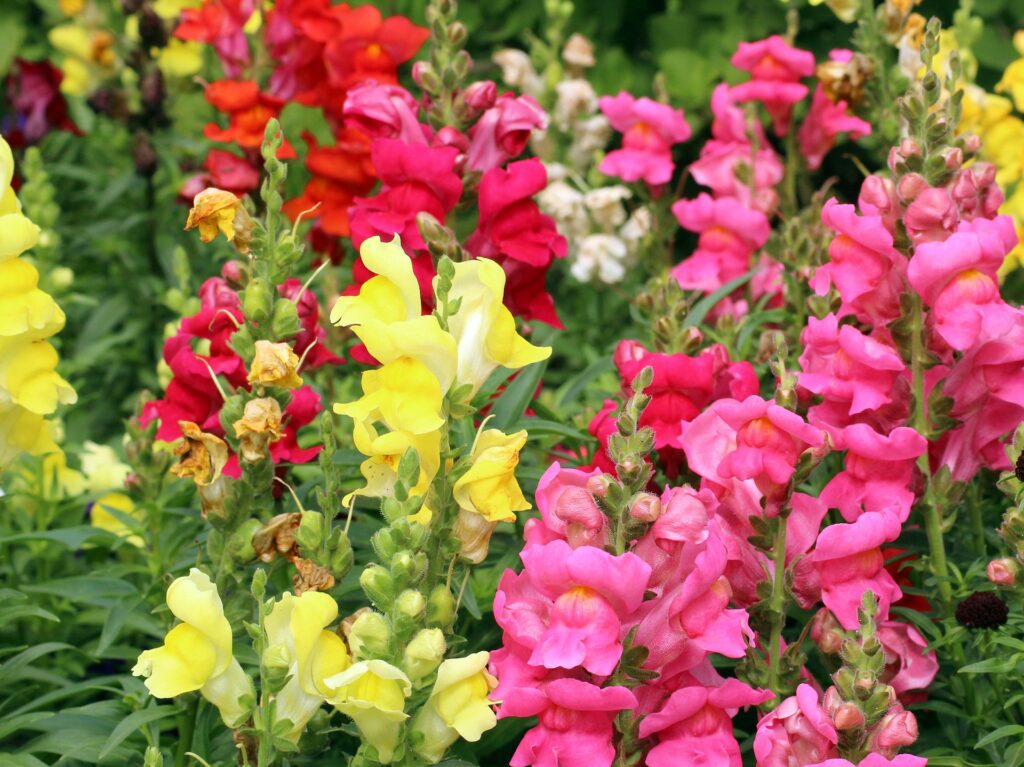
Angelonia, affectionately known as summer snapdragon, is a stunning summer annual that produces spikes of colorful flowers. Ranging from white and pink to deep purple, Angelonia is tolerant of heat and humidity, making it ideal for summer gardens. It prefers well-drained soil and thrives in full sun.
When planting Angelonia in June, their upright nature allows them to be great backdrops in flower beds or borders. Regular deadheading ensures continued blooming throughout the season. They are relatively low-maintenance plants that require little care once established, making them a perfect choice for the busy gardener seeking vibrant summer color.
Gomphrena
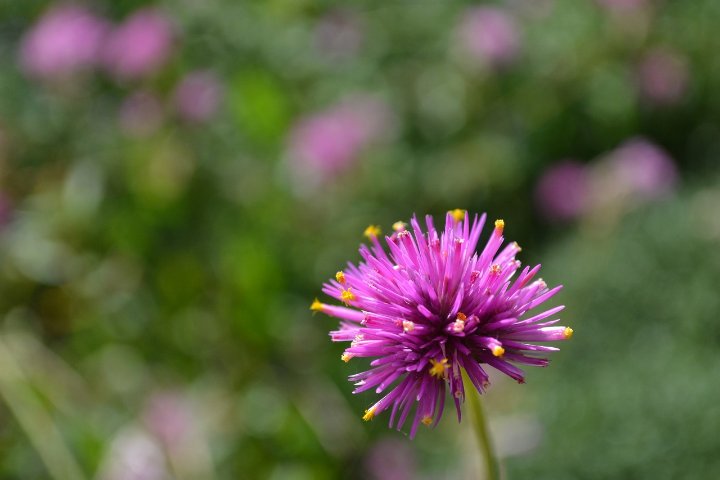
Gomphrena, or globe amaranth, is celebrated for its striking, globe-shaped blooms that are available in vibrant hues from pink to deep purple. This annual is excellent for cutting gardens and adds cheerful color to borders and containers. Gomphrena thrives in full sun and well-drained soil, making it exceptionally easy to grow.
Plant Gomphrena in June, and they’re sure to provide a long season of blooms. They are also drought-resistant, making them ideal for low-water gardens. Additionally, Gomphrena flowers can be dried for floral arrangements, extending their life beyond the garden. Their resilience and unique appearance make them a delightful addition to any flower display.
Canna
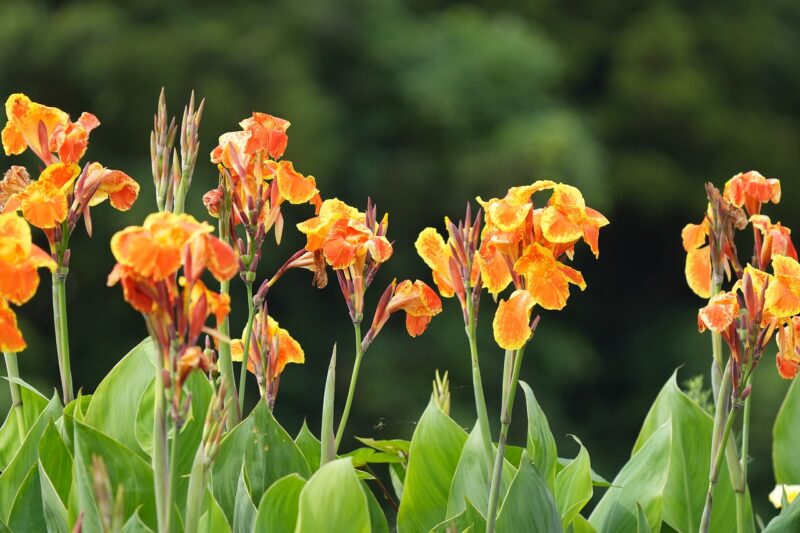
Canna lilies are known for their tropical look, boasting large leaves and bold, flamboyant flowers in shades of red, yellow, and salmon. Perfect for adding a bold statement to gardens, Cannas thrive in full sun and love rich, moist soil, making them ideal for garden borders and near water features.
Plant canna bulbs in June for a vibrant summer display. They often require staking due to their height, particularly in windy areas. Their large leaves not only add a lush, tropical feel but also provide shelter for garden wildlife. By choosing Cannas, you’ll create an eye-catching focal point that will wow visitors all summer long.
Balloon Flower
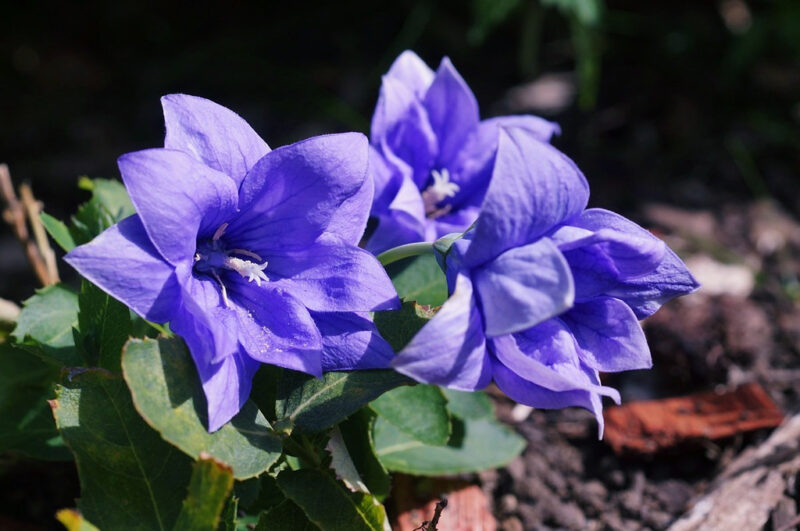
Balloon flowers, or Platycodon, are charming perennial plants with unique balloon-like buds that expand into star-shaped flowers. They come in shades of blue, purple, and white and offer a delightful burst of color in summer. Balloon flowers thrive in full sun to partial shade and prefer well-drained soil.
Plant Balloon Flowers in June, allowing enough room for their growth, as they can spread quite a bit. They require moderate moisture, particularly during dry spells, to encourage robust blooming. Their whimsical shape and appealing color make Balloon Flowers an enchanting addition to any garden, delighting both gardeners and passersby alike.
Helenium
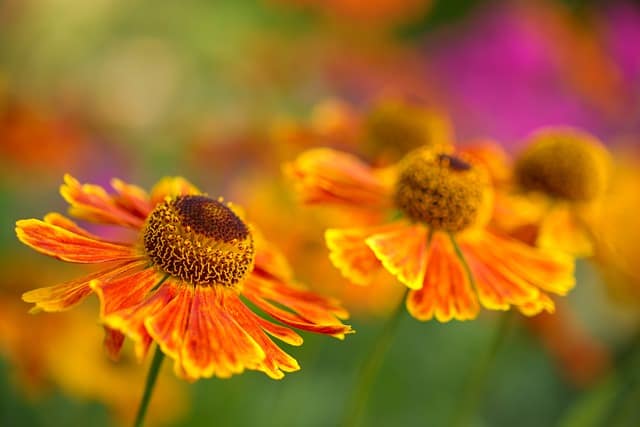
Helenium, often called sneezeweed, is a wonderful late-summer flowering plant that offers vibrant, daisy-like blooms in shades of yellow, red, and orange. It thrives in full sun, preferring rich, moist soil, making it a great addition to perennial gardens and borders.
When planting Helenium in June, space them adequately to prevent overcrowding, which can lead to disease. Regular deadheading encourages continuous blooming throughout the summer. Helenium’s brilliant colors can help bridge the gap between early and late summer flowering plants, providing a continuous display of interest and attracting pollinators.
Impatiens
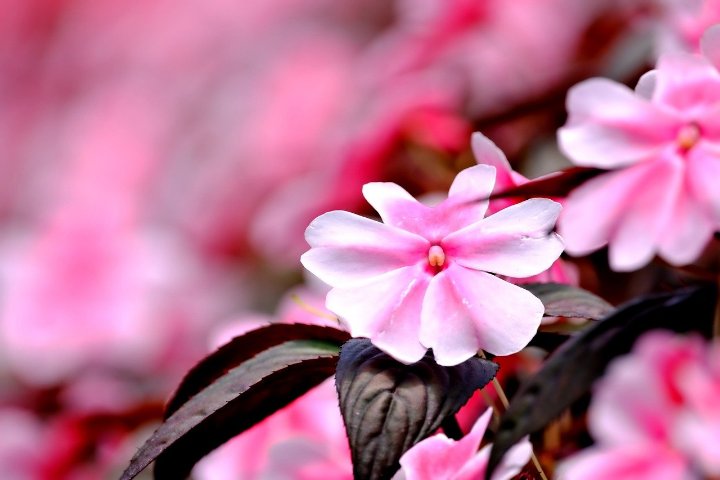
Impatiens are often the go-to choice for shaded areas, producing colorful flowers in shades of pink, red, white, and purple. These annual plants thrive in moist, well-drained soil and prefer partial to full shade, making them perfect for brightening up darker corners of the garden.
When planting Impatiens in June, be sure to water them regularly to keep the soil consistently moist. They can easily fill in empty spaces and are often used in containers or as bedding plants. With their ability to bloom all summer long, Impatiens provide continuous color and charm in places where other flowers may struggle.
Sedum
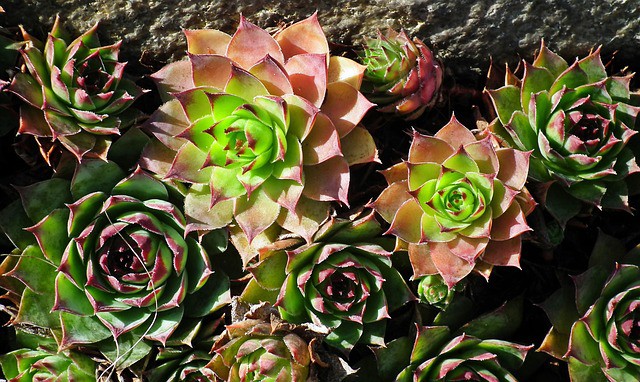
Sedum is a highly resilient perennial often referred to as stonecrop. Its succulent foliage and unique flower clusters come in various shapes and colors, making it an excellent choice for both sunny and drought-prone areas. Sedum thrives in well-drained soil and full sun, making it a low-maintenance option.
Plant Sedum in June to take advantage of its hardy nature. These plants prefer minimal watering once they are established, ensuring they remain a low-effort beauty in your garden. They also attract pollinators, making them a valuable addition to any eco-friendly landscape. Incorporating Sedum offers both aesthetic appeal and practicality.
Globe Thistle
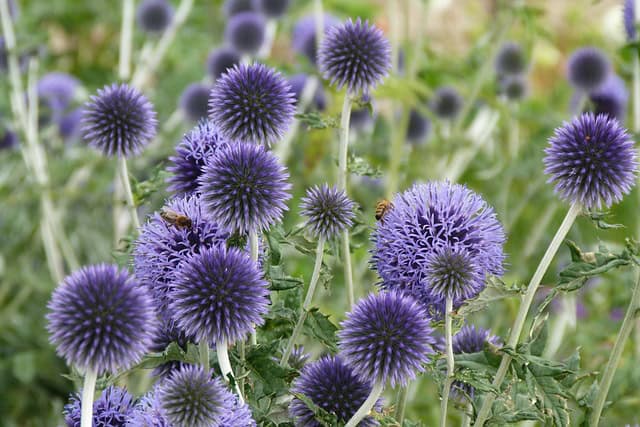
Globe Thistle, or Echinops, features unique spherical flowers that are a deep blue or purple, standing tall on sturdy stems. These perennials are especially attractive to bees and butterflies, making them perfect for a pollinator garden. Globe Thistle prefers full sun and well-drained soil, thriving in a variety of garden settings.
When planting Globe Thistle in June, provide plenty of space as they can spread over time. They appreciate regular moisture, especially during dry spells. Additionally, their striking appearance adds an architectural quality to gardens, pairing beautifully with more traditional blooms.
Lilies

Lilies are classic summer bloomers that come in numerous varieties and colors, creating an elegant atmosphere in any garden. These bulbs thrive in well-drained soil and prefer full sun to partial shade, making them versatile for different landscapes. Lilies often bloom from mid-summer into fall, providing a prolonged display of beauty.
When planting lilies in June, choose a spot with adequate spacing to prevent crowding and ensure proper air circulation. Regular watering is crucial, especially during the blooming period. Consider mixing different lily varieties for a montage of colors and heights in your garden. Their intoxicating fragrance and resplendent beauty make them a timeless favorite among gardeners.
Caladiums
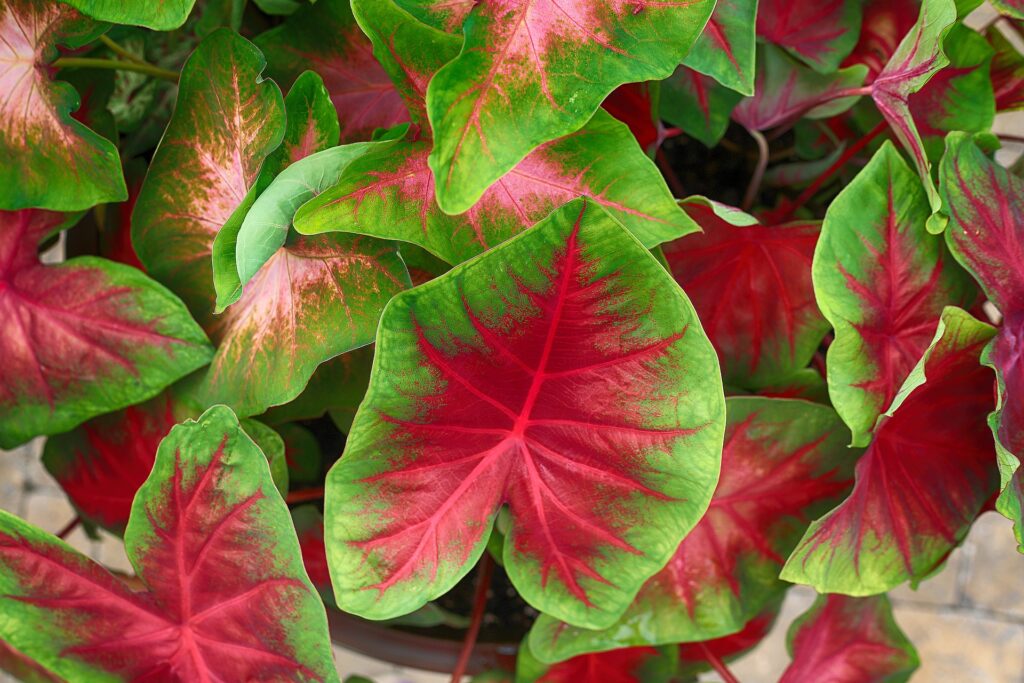
Caladiums are known for their stunning foliage, featuring heart-shaped leaves in vibrant patterns of green, white, pink, and red. These tropical plants prefer shaded to partially shaded areas and thrive in consistently moist, well-draining soil.
When planting caladium bulbs in June, ensure they are placed in an area where they won’t get scorched by the afternoon sun. Their dramatic leaves create a lush, tropical vibe, making them an excellent choice for patio gardens or shaded borders. With minimal care, Caladiums will provide a long season of colorful foliage without needing flowers to impress.
Geraniums
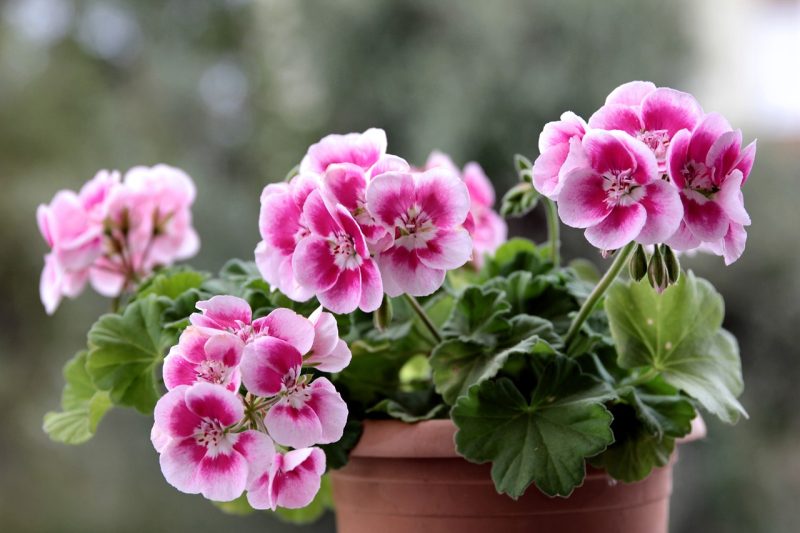
Geraniums are popular summer annuals recognized for their cheerful blooms and vigorous growth. Available in many colors, they can be used effectively in containers, hanging baskets, or as bedding plants. These flowers thrive in full sun and well-draining soil, making them versatile for various landscapes.
Plant geraniums in June for a vibrant garden that remains lively throughout the season. They require regular watering, especially in containers, to keep them healthy and blooming. Geraniums benefit from deadheading to enhance flowering, and their delightful fragrance is an added bonus. With their resilience and charm, geraniums are a staple for many summer gardens.
Torenia
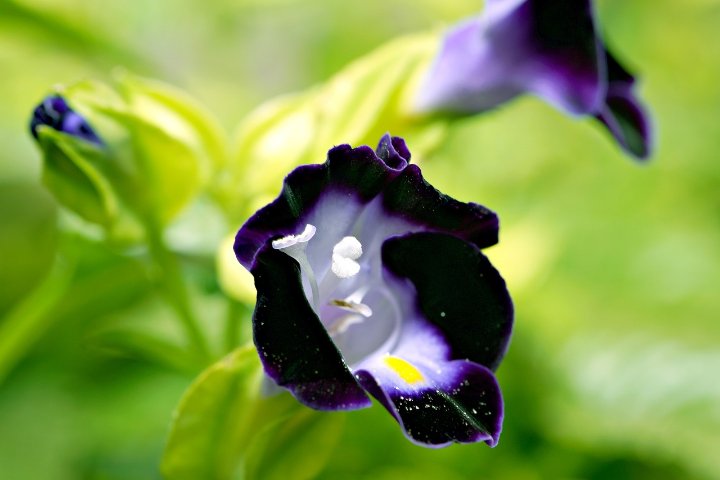
Torenia, also known as wishbone flower, is a beautiful annual that produces charming, tubular blossoms in colorful shades of blue, purple, pink, and white. They enjoy partial shade, making them ideal for garden beds that don’t receive full sunlight.
When planting Torenia in June, ensure they are placed in rich, moist soil to encourage vigorous growth. They thrive in humid conditions, making them perfect for summer gardens. This lovely flower attracts pollinators and adds a soft, whimsical touch to any planting layout. Incorporating Torenia can delight anyone who wanders through your garden.





